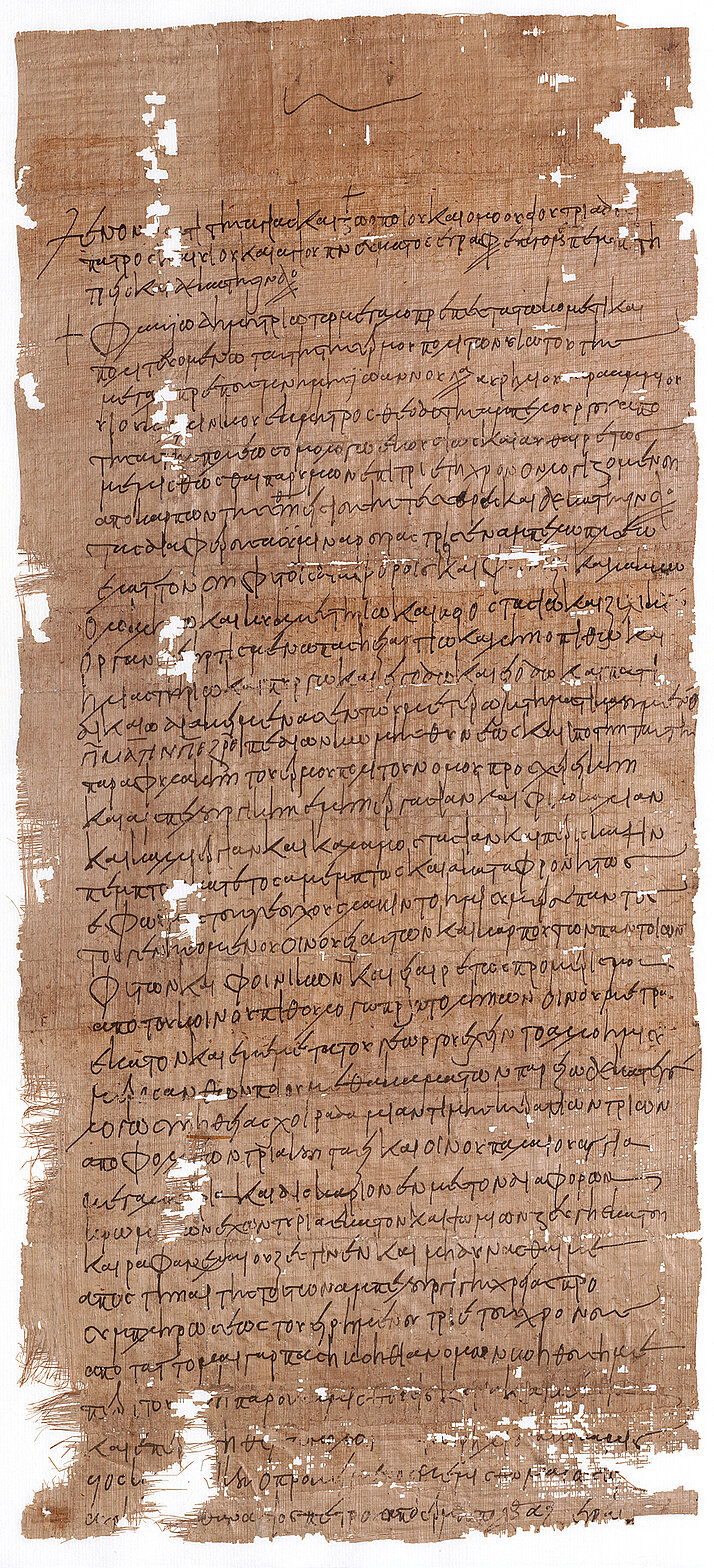Lease contract for a vineyard
Greek, 28 August 624(?) AD, papyrus
G 2216
With its considerable length of 70 cm, this fully preserved lease deed is a particularly detailed example of this type of contract. It not only gives us a detailed insight into the condition and value of the land, but we also are informed in detail about the leased equipment and the work required in viticulture the tenant must carry out.
In Egypt, the vineyards to be leased never consisted solely of planted vines. There were shady intercrops such as date palms and other fruit trees, whose yields were also part of the rent. In order to ensure irrigation, pumping devices and reservoirs were there to be maintained by the tenant. This contract also mentions a stable and cattle, whose task was to drive the pumping station. A wine press was also part of the contract. A sunspotted area called a heliasterion was used to ripen the wine. (The direct sunlight made the ancient wine sweeter.) The facilities even included a (guard) tower, as the ripe grapes and freshly pressed wine apparently also attracted thieves.
In contracts like this, it was customary to pay the rent not in money but as a fixed proportion of the annual harvest. In this particular case, the tenant Aurelios Abraamios paid with half of the wine pressed and half of the harvest of all the plants on the property. In addition, there were the so-called special levies, which also had to be paid annually: A piglet, around 13 litres of "old wine", 100 loaves of cheese, 100 loaves of bread and half a litre of radish oil. Such additional payments are often found in late antique lease contracts.
Our database entry will provide you further literature references and a digitalisation of the object.

